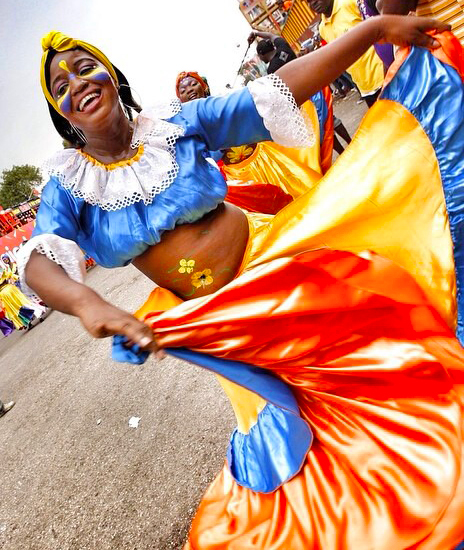The peculiar model of the new p4, versus mesolingual conid, try characteristic of your own Tragulidae and you may Bachitheriidae , , . The blend away from an excellent tusk such as for instance p1, an extremely elongated diastema between p1 and you may p2 and that build of your own p4 is exclusive among ruminants and you may suggest the brand new Bachitheriidae , . The differentiation anywhere between Bachitherium variety is usually predicated on proportions variations , . Nevertheless the diastema length , the new proportions of brand new postcranial stays , , and you can differences in the general shape of the fresh new mandible , , , correspond to a species-specific ecomorphology. The fresh p3 and you will p4 away from Bachitherium specimens away from Gaimersheim1 is also provides neocrista during the straight back valley. Blondel argues that element is unique one of many Bachitheriidae and you will is a keen autapomorphy of the variety B. lavocati. not, equivalent possess being seen with the B. curtum and B. insigne, in the event it remains uncommon . Aiglstorfer et al. have already found the enormous variability in the shape of the traguline p4 within one species. Brand new p4 of your own Tragulidae Dorcatherium naui is also lack the cristid building the lingual edge of the fresh enamel into the whole mediator possible . How big is one’s teeth read the following is much like that from Bachitherium curtum and you may B. lavocati , , , (look for S1 Annex). But not, the fresh new diastema length of the fresh new specimens off Gaimersheim is longer than the ones from the little B. curtum, just what certainly corresponds to brand new prognosis out of B. lavocati advised because of the Sudre . Up to now, Bachitherium lavocati was just recognized in the Pech Desse area , .
Malfunction discussion
The new sample MNHN LIM157 presents a comparable morphology to the people away from Bachitherium within the having trochleas not in line. The corners is a bit additional in proportions and large, the fresh new outside one to becoming big. The newest plantar crest is actually missing. There is a massive plantar projection of your internal lib off the new proximal trochlea. Because of the proportions provided with Martinez Sudre , that it traditional are larger (dorso-plantar height: twelve.4 mm and you will size: thirteen.3) than specimens of B. viretti and you can B. curtum, and might match very big B. lavocati and/or imply measurements of B. guiroutensis (B. insigne are maybe not revealed). Looking at the instance of Martinez Sudre and you can Sudre , B. curtum, B. viretti, and you will B. guiroutensis have trochleas faster lined up than toward B. lavocati. Furthermore, the fresh new mouth area of your proximal trochlea, when you look at the B. guiroutensis are not shaped, as opposed to B. lavocati. Considering a few of these has, our specimen is actually very similar to Bachitherium lavocati.
Holotype referred specimens advice
Holotype. Bouvrain mais aussi al. (, Fig. 1) has created sample MNHN Qu4771, a right mandible on enamel row p2-m3 and ramus partially kept, given that holotype to your variety “Amphitragulus†quercyi (so it really works, Fig. 5.1), on the Old collection off Quercy (Tertiary, France).
Known specimens. Dated range off Quercy MNHN Qu4771 right mandible for the enamel line p2-m3 and you will ramus partly maintained (Holotype; , Fig. 1; this work, Fig. 5.1). Balsthal Bannli NMS 7685 correct mandible with p4-m3 (it performs, Fig. 5.2). Pech Desse USTL PDS1312 right mandible that have p2-m3 (, Fig. 2.4c; this performs, Fig. 5.3); USTL PDS1342 left mandible having p4-m1; USTL PDS1421 best connexion maxillary with D2-D4 (, Fig. dos.4b; that it performs, Fig. 5.5); USTL PDS1441 leftover mandible which have p2-m3; USTL PDS1803 proper mandible having p2-m3 (, Fig. 14); USTL PDS2134 correct mandible with tooth outlet away from p1 and you may tooth line p2-m1 (that it works, Fig. 5.4); USTL PDS2137 leftover mandible that have m1-m3; USTL PDS2138 best mandible which have p3-m1; USTL PDS2139 kept maxillary that have P3-M3 (, Fig. dos.4a; it really works, Fig. 5.6). Gaimersheim1 SNSB-BSPG 1952II304 proper m2; SNSB-BSPG 1952II4803 remaining maxillary with P3-M1; SNSB-BSPG 1952II4804 best maxillary that have D3-M1; SNSB-BSPG 1952II4811 remaining mandible with m2-m3; SNSB-BSPG 1952II4820 leftover mandible with p4-m1; SNSB-BSPG 1952II4821 proper mandible that have m1-m3; SNSB-BSPG 1952II4844 right mandible that have m3; SNSB-BSPG 1952II4845 correct maxillary having M1 M3; SNSB-BSPG 1952II4847 left maxillary having D3-M1; SNSB-BSPG 1952II4851 proper mandible that have m1-m3; SNSB-BSPG 1952II4854 leftover mandible with m1; SNSB-BSPG 1952II4858 right mandible with m1; SNSB-BSPG 1952II4865 kept mandible with m1-m3; SNSB-BSPG 1952II4867 best mandible having d4; SNSB-BSPG 1952II4872 best mandible that have m2-m3; SNSB-BSPG 1952II4873 remaining m3; SNSB-BSPG 1952II4878 kept mandible which have m3; SNSB-BSPG 1952II4884 best mandible which have p3-m2; SNSB-BSPG 1952II4885 right mandible which have p4-m2; SNSB-BSPG 1952II4891 proper M3; SNSB-BSPG 1952II4892 kept M2; SNSB-BSPG 1952II4894 left mandible which have p2-m3; SNSB-BSPG 1952II4896 proper m1-m2; SNSB-BSPG 1952II4909 right mandible which have m2-m3; SNSB-BSPG 1952II4911 fragmented skull; SNSB-BSPG 1952II4912 best maxillary that have P2-M1 (which really works, Fig. 5.7); SNSB-BSPG 1952II4914 leftover mandible that have p2-m3; SNSB-BSPG 1952II4917 remaining p4; SNSB-BSPG 1952II4920 kept maxillary that have M1-M3; SNSB-BSPG 1952II4921 correct maxillary which have M1-M3; SNSB-BSPG 1952II4924 left M2; SNSB-BSPG 1952II4927 best mandible that have m1-m3; SNSB-BSPG 1952II4932 left M3; SNSB-BSPG 1952II4933 remaining M3; SNSB-BSPG 1952II4941 best p4; SNSB-BSPG 1952II4942 leftover d3; SNSB-BSPG 1952II4943 left mandible having d3-m1; SNSB-BSPG 1952II4944 proper maxillary that have M2-M3; SNSB-BSPG 1952II4945 kept maxillary that have D4-M2; SNSB-BSPG 1952II4946 remaining mandible which have m1-m3; SNSB-BSPG 1952II4947 best maxillary which have D4-M2; SNSB-BSPG 1952II4948 best maxillary with P3-M1; SNSB-BSPG 1952II4949 proper maxillary with M1-M3; SNSB-BSPG 1952II4950 leftover mandible having p4-m1; SNSB-BSPG 1952II4951 M2 kept; SNSB-BSPG 1952II4952 best mandible that have p3, m2-m3.
